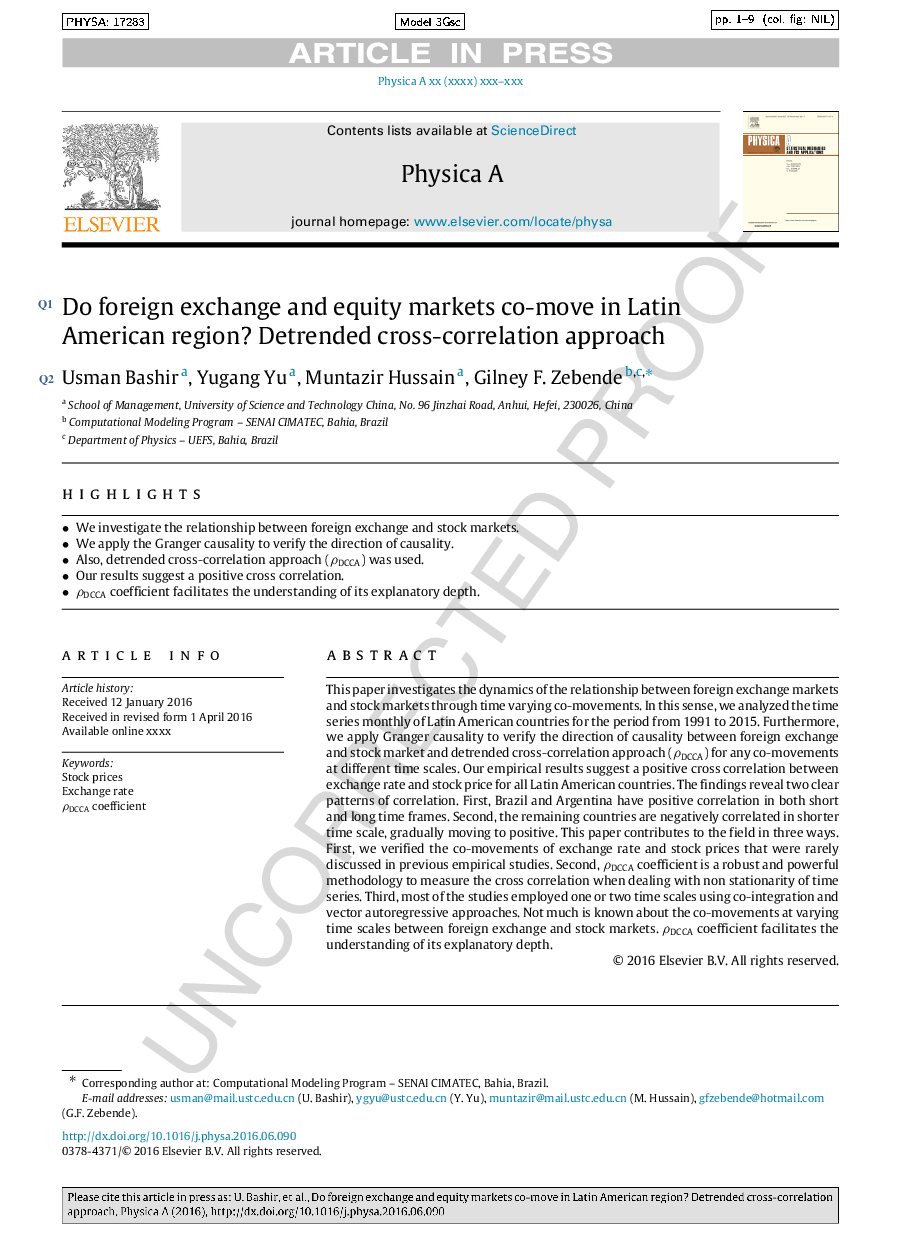| Article ID | Journal | Published Year | Pages | File Type |
|---|---|---|---|---|
| 7377160 | Physica A: Statistical Mechanics and its Applications | 2016 | 9 Pages |
Abstract
This paper investigates the dynamics of the relationship between foreign exchange markets and stock markets through time varying co-movements. In this sense, we analyzed the time series monthly of Latin American countries for the period from 1991 to 2015. Furthermore, we apply Granger causality to verify the direction of causality between foreign exchange and stock market and detrended cross-correlation approach (ÏDCCA) for any co-movements at different time scales. Our empirical results suggest a positive cross correlation between exchange rate and stock price for all Latin American countries. The findings reveal two clear patterns of correlation. First, Brazil and Argentina have positive correlation in both short and long time frames. Second, the remaining countries are negatively correlated in shorter time scale, gradually moving to positive. This paper contributes to the field in three ways. First, we verified the co-movements of exchange rate and stock prices that were rarely discussed in previous empirical studies. Second, ÏDCCA coefficient is a robust and powerful methodology to measure the cross correlation when dealing with non stationarity of time series. Third, most of the studies employed one or two time scales using co-integration and vector autoregressive approaches. Not much is known about the co-movements at varying time scales between foreign exchange and stock markets. ÏDCCA coefficient facilitates the understanding of its explanatory depth.
Keywords
Related Topics
Physical Sciences and Engineering
Mathematics
Mathematical Physics
Authors
Usman Bashir, Yugang Yu, Muntazir Hussain, Gilney F. Zebende,
